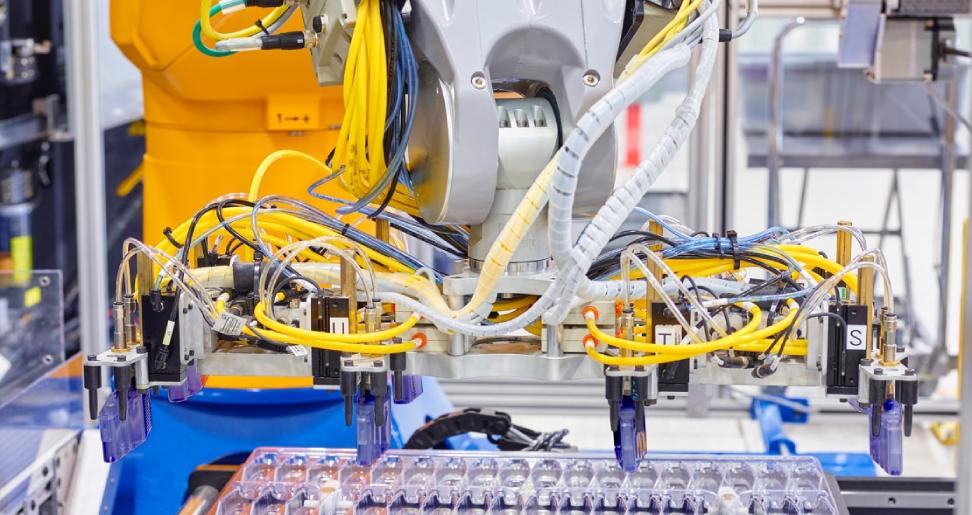In the relentless pursuit of high-performance products, durability reigns supreme. Traditional manufacturing techniques often face limitations, but a powerful solution emerges in the form of overmolding aluminum. This process, where plastic is fused onto a pre-formed aluminum core within a single mold, unlocks a unique blend of strength, functionality, and enhanced product lifespan. Let’s delve into the world of overmolding aluminum, exploring its potential for creating exceptionally durable products.
Why Aluminum? A Foundation for Strength
While plastic is a common core material in over mold, aluminum offers distinct advantages for durability:
Unmatched Strength and Rigidity: Compared to most plastics, aluminum boasts superior strength and rigidity. This makes it ideal for structural components that experience high loads, such as frames in electronics or chassis parts in vehicles. Overmolding with aluminum reinforces these components, leading to products that can withstand significant stress and resist deformation.
Impact Resistance: The inherent strength of aluminum translates to improved impact resistance for overmolded parts. This is crucial for products susceptible to accidental drops or impacts, such as tools, sports equipment, or certain consumer electronics. By absorbing impact energy, the aluminum core protects the overmolded plastic layer, minimizing damage and extending product lifespan.
Beyond Strength: Additional Benefits for Durability
Overmolding with Aluminum or aluminium offers advantages beyond just raw strength, further contributing to product durability:
Improved Thermal Management: Aluminum’s exceptional thermal conductivity allows for efficient heat dissipation from the core. This is critical for electronic devices, LED lighting components, or any application where heat generation can be detrimental. By efficiently drawing heat away from sensitive components, overmolded aluminum prevents overheating, a major contributor to product degradation.
Enhanced Environmental Resistance: Certain aluminum alloys offer good corrosion resistance, particularly when treated with surface coatings. This makes overmolded aluminum components suitable for use in harsh environments or applications exposed to moisture, chemicals, or UV rays. The protective plastic layer further shields the aluminum core, creating a durable composite that withstands environmental wear and tear.
Design Freedom for Durability: Overmolding allows for strategic placement of plastic around the aluminum core. This enables designers to create targeted reinforcement at critical stress points, further enhancing the product’s durability. Additionally, the plastic layer can be chosen for specific properties like wear resistance or UV protection, tailoring durability to the specific application.
Overcoming Challenges: Ensuring Successful Implementation
While the advantages of overmolding with aluminum are substantial, some challenges need to be addressed to ensure successful implementation and achieve optimal durability:
Thermal Expansion Mismatch: Aluminum and plastic have different coefficients of thermal expansion. This mismatch can lead to warping or cracking of the overmolded part if not addressed through careful design considerations and material selection. Utilizing compatible materials and strategically designing the part geometry minimizes thermal stress on the bond.
Surface Preparation: Aluminum surfaces require proper pre-treatment for optimal adhesion with the plastic. Techniques like sandblasting, chemical etching, or applying an adhesive promoter ensure a strong and durable bond between the two materials. A weak bond can lead to premature failure and compromise the overall durability of the overmolded part.
Mold Design Complexity: Molds for overmolding aluminum require meticulous design considerations for gating systems, cooling channels, and ejection mechanisms. These elements need to accommodate the different material properties to ensure proper flow of the plastic, prevent warping, and efficiently cool the part after molding. Deficiencies in mold design can lead to manufacturing defects and compromise the durability of the final product.
Techniques for Overmolding Aluminum: Achieving Durability
Several overmolding techniques can be employed to create exceptionally durable aluminum components:
Insert Molding: This common approach involves placing a pre-formed aluminum insert in the mold cavity. Plastic is then injected around the insert, creating a strong and durable bond. This technique offers a good balance between simplicity and effectiveness.
Two-Shot Molding: This technique offers more design freedom as molten plastic is directly injected into the aluminum insert within the mold. However, it requires precise control of temperature and pressure to prevent warping due to thermal expansion. Two-shot molding is ideal for complex designs where precise placement of the plastic layer is crucial for achieving optimal durability.
Ultrasonic Metal Welding (UMW): UMW utilizes high-frequency vibrations to create a solid-state weld between the aluminum component and the overmolded plastic. This technique offers strong bonds and minimal heat generation, minimizing the risk of warping. UMW is particularly beneficial for creating durable bonds in smaller, intricate components.
Conclusion:
Overmolding with aluminum emerges as a game-changer in the pursuit of superior product durability. By harnessing the exceptional strength, thermal management capabilities, and design freedom offered by this approach, manufacturers can create products that not only perform exceptionally but also endure the rigors of everyday use.
Read More:
- Man Arrested For Parachuting His Way Off Of Paris’s Eiffel Tower
- Russian Space Agency Chief Confirms The Main Reason For The Luna 25 Crash
Feature Image Source: https://tinyurl.com/548a9dc4

